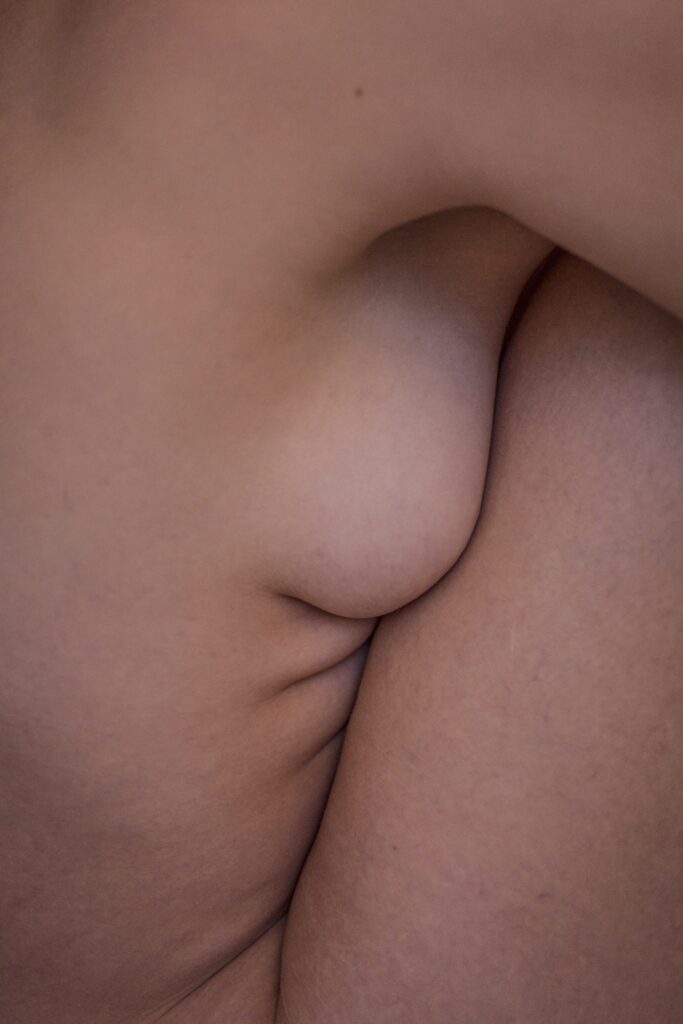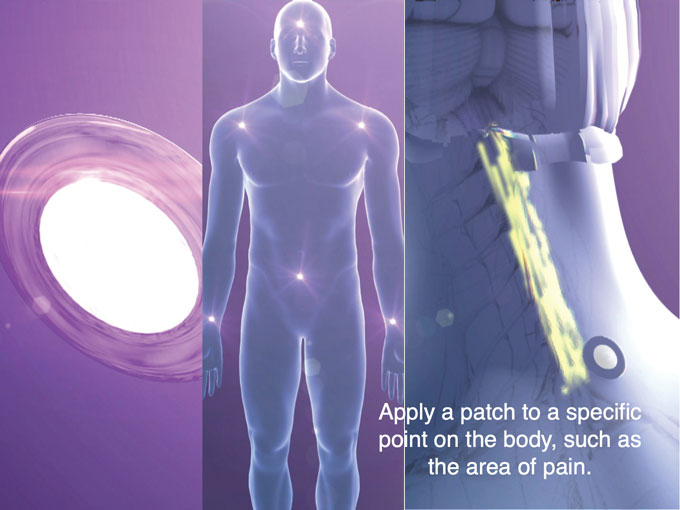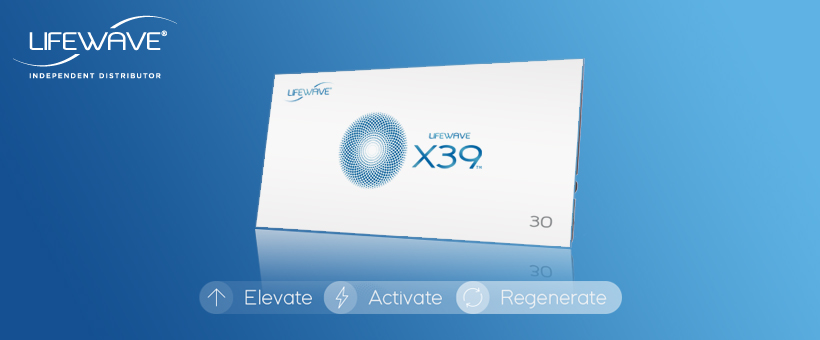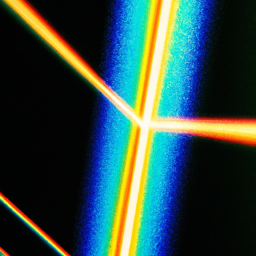In the world of dermatology, a groundbreaking treatment known as phototherapy is making waves and changing the way we approach skin conditions. Harnessing the power of light, phototherapy has emerged as a powerful tool in the fight against various skin ailments, from acne to psoriasis. With its non-invasive and effective nature, this innovative treatment is transforming the field of dermatology and providing hope to countless individuals seeking relief from their skin concerns.
Understanding Phototherapy
What is phototherapy?
Phototherapy, also known as light therapy, is a form of treatment that utilizes specific wavelengths of light to improve various skin conditions. It has been widely used in dermatology for its effectiveness in treating conditions such as psoriasis, eczema, vitiligo, acne, and many more. In essence, phototherapy harnesses the power of light to stimulate the skin cells and promote healing.
How does phototherapy work?
Phototherapy works by exposing the skin to light waves that have therapeutic properties. These light waves penetrate the outer layer of the skin and stimulate certain reactions within the cells. This stimulation can help reduce inflammation, encourage cell turnover, and regulate the production of melanin, among other benefits. Depending on the type of phototherapy used, the specific wavelengths and dosages of light may vary, but the underlying principle remains the same.
Types of phototherapy
There are several types of phototherapy used in dermatology, each with its own unique benefits and applications. Some of the most commonly used types include Ultraviolet B (UVB) therapy, Narrowband UVB therapy, Psoralen Plus Ultraviolet A (PUVA) therapy, Excimer laser treatment, and Photodynamic therapy (PDT). Each of these methods has its own specific protocols and uses, which dermatologists carefully select based on the specific condition being treated and the patient’s individual needs.
Benefits of phototherapy
Phototherapy offers numerous benefits in the field of dermatology. Firstly, it provides a non-invasive and drug-free treatment option for many skin conditions, which can be particularly beneficial for individuals who may have contraindications or sensitivities to certain medications. Furthermore, phototherapy has shown to be effective in managing chronic skin conditions, such as psoriasis and eczema, by reducing symptoms and improving overall skin health. Additionally, phototherapy can be a cost-effective treatment option compared to some other modalities, especially when used as a long-term maintenance therapy.
The Impact of Phototherapy on Dermatology
Traditional treatments vs. phototherapy
Traditionally, dermatological treatments often relied on topical creams, ointments, and oral medications to manage various skin conditions. While these methods may provide relief, they are not without potential side effects and limitations. Phototherapy, on the other hand, offers a targeted and controlled approach to address specific skin concerns without the systemic effects associated with oral medications. In many cases, phototherapy has become a preferred treatment option for patients and dermatologists alike due to its efficacy and reduced risk profile.
Advancements in dermatological treatments
The field of dermatology has witnessed significant advancements in recent years, and phototherapy plays a crucial role in these developments. With the advent of more advanced light sources, such as narrowband UVB and excimer lasers, dermatologists can now deliver precise and customized treatment to the affected areas of the skin. These advancements have revolutionized the field by allowing for increased treatment efficiency, reduced treatment duration, and improved patient outcomes.
Phototherapy’s role in skin cancer
Skin cancer is a prevalent condition that affects millions of individuals worldwide. Phototherapy has emerged as a valuable tool in the management and treatment of certain types of skin cancer. In cases where surgery or other interventions may not be suitable options, phototherapy can be used to selectively target and destroy cancerous cells while minimizing damage to healthy tissues. This targeted approach offers a less invasive alternative for patients and can be an important component of their overall cancer treatment plan.
Effectiveness of phototherapy in treating various skin conditions
One of the most significant impacts of phototherapy on dermatology is its effectiveness in treating a wide range of skin conditions. Conditions such as psoriasis, eczema, vitiligo, and acne have shown positive responses to phototherapy treatment. Research studies and clinical trials have demonstrated the ability of phototherapy to reduce inflammation, suppress the abnormal immune response, and restore the normal functioning of the skin cells. This success has led to phototherapy becoming a first-line treatment or an adjunctive therapy in the management of various dermatological conditions.

Types of Phototherapy Used in Dermatology
Ultraviolet B (UVB) therapy
UVB therapy utilizes specific wavelengths of ultraviolet B light to treat various skin conditions. This type of phototherapy is often used for conditions such as psoriasis, vitiligo, and eczema. UVB therapy can be delivered through broadband or narrowband wavelengths, with narrowband UVB being the more commonly used and preferred method due to its higher efficacy and lower risks of side effects.
Narrowband UVB therapy
Narrowband UVB therapy is a specialized form of UVB treatment that uses a narrow range of ultraviolet B wavelengths. This narrow range allows for greater precision and effectiveness in treating specific skin conditions, particularly psoriasis. Narrowband UVB therapy is considered to have a higher therapeutic index, meaning it delivers the optimal balance between efficacy and safety.
Psoralen Plus Ultraviolet A (PUVA) therapy
PUVA therapy combines the use of a medication called psoralen with exposure to ultraviolet A (UVA) light. Psoralen is either taken orally or applied topically, and it sensitizes the skin to UVA light. This combination treatment is primarily used for conditions like psoriasis, vitiligo, and eczema. PUVA therapy has been shown to be effective in controlling symptoms, promoting skin repigmentation, and reducing the severity of various dermatological conditions.
Excimer laser treatment
Excimer laser treatment utilizes a controlled beam of ultraviolet light to target specific areas of the skin affected by conditions such as psoriasis and vitiligo. This focused approach allows for precise targeting and sparing of healthy skin, resulting in more effective treatment outcomes. Excimer laser treatment is especially useful for localized areas or stubborn plaques that may not respond well to other forms of phototherapy.
Photodynamic therapy (PDT)
Photodynamic therapy involves the use of a photosensitizing agent, which is applied topically or injected, followed by the exposure of the affected area to a specific wavelength of light. This combination activates the photosensitizer and induces cell death in targeted cells, such as those present in certain types of skin cancer or precancerous lesions. PDT is an evolving treatment modality that shows promise in treating a variety of skin conditions, including certain types of acne and superficial skin cancers.
Safety and Side Effects of Phototherapy
Understanding the risks
While phototherapy is generally considered safe and well-tolerated, it is essential to be aware of potential risks and side effects. Prolonged and/or excessive exposure to certain types of light used in phototherapy, such as UVA or UVB, can increase the risk of skin damage, including sunburn, premature aging, and an increased likelihood of developing skin cancer. It is crucial to follow the recommended treatment guidelines and to be mindful of any personal risk factors, such as a history of skin cancer or photosensitivity conditions.
Precautions during treatment
To ensure the safety and effectiveness of phototherapy, various precautions should be taken during treatment. Patients should receive a thorough evaluation before starting phototherapy to assess their skin type, potential risks, and contraindications. Protective measures should be taken, such as using goggles to shield the eyes, covering unaffected areas, and applying sunscreen to areas not being treated. Dermatologists carefully monitor treatment progress and adjust dosages and exposure times as needed to minimize the risk of adverse effects.
Potential side effects
Like any medical treatment, phototherapy can have potential side effects, although they are generally mild and temporary. Common side effects may include redness, itching, dryness, and increased sensitivity of the treated skin. In some cases, individuals may experience a flare-up of their condition during the initial stages of treatment, which typically resolves as the therapy progresses. It is essential to communicate any concerns or changes in symptoms to the treating dermatologist to ensure appropriate management of side effects.
Minimizing side effects
To minimize side effects and maximize the benefits of phototherapy, certain measures can be taken. Maintaining a consistent treatment schedule as prescribed by the dermatologist is crucial for optimal outcomes. Adequate moisturization of the skin and gentle cleansing are recommended to alleviate dryness and irritation. Avoiding excessive sun exposure outside of treatment sessions and adhering to sun protection practices, such as wearing protective clothing and using broad-spectrum sunscreen, can help reduce the risk of adverse reactions.

Phototherapy for Psoriasis
Psoriasis: An overview
Psoriasis is a chronic autoimmune condition characterized by the rapid turnover of skin cells, leading to the accumulation of thick, scaly patches on the skin’s surface. It affects millions of people worldwide and can significantly impact one’s quality of life. While there is no cure for psoriasis, various treatments, including phototherapy, can help manage symptoms and control the disease.
Challenges of treating psoriasis
Treating psoriasis can be challenging due to its chronic nature and the variation in individual responses to different therapies. Some individuals may not respond well to topical treatments alone, while others may need additional therapies to achieve optimal results. The chronic and relapsing nature of psoriasis requires long-term management, making phototherapy an attractive option due to its efficacy and relatively limited side effects.
Effectiveness of phototherapy in managing psoriasis
Phototherapy has proven to be highly effective in managing psoriasis symptoms by slowing down cell turnover and reducing inflammation. Both UVB therapy and PUVA therapy have shown positive outcomes in improving skin lesions, reducing scaling, and alleviating itchiness. Narrowband UVB therapy, in particular, has become a preferred treatment choice for psoriasis due to its high success rate, particularly for plaque psoriasis.
Combining phototherapy with other treatments for psoriasis
In some cases, combining phototherapy with other treatment modalities can further enhance the management of psoriasis. Topical medications, such as corticosteroids or vitamin D analogs, can be used in conjunction with phototherapy to target specific areas or persistent patches. Additionally, systemic medications or biologic therapies may be recommended for individuals with more severe or widespread psoriasis. The combination of therapies is tailored to each patient’s specific needs and desired treatment outcomes.
Phototherapy for Eczema
Understanding eczema
Eczema, also known as atopic dermatitis, is a chronic inflammatory skin condition characterized by dry, itchy, and inflamed patches of skin. It commonly affects infants and young children, although it can persist into adulthood. Eczema can significantly impact an individual’s quality of life, and the management of symptoms often requires a combination of therapies.
Benefits of phototherapy for eczema
Phototherapy has emerged as a valuable treatment option for eczema due to its anti-inflammatory properties and its ability to improve the skin’s barrier function. UVB therapy and narrowband UVB therapy have shown promising results in reducing eczema flare-ups, relieving itching, and decreasing the need for topical corticosteroids. Phototherapy helps modulate the immune response, which is often overactive in individuals with eczema, thereby reducing the severity of symptoms.
Types of phototherapy used for eczema
UVB therapy and narrowband UVB therapy are the most common forms of phototherapy used for eczema treatment. These therapies are well-tolerated and have shown to be effective in managing eczema symptoms, particularly reducing inflammation and pruritus. Dermatologists carefully assess each patient’s condition and determine the appropriate treatment regimen, considering factors such as disease severity, response to other therapies, and individual patient preferences.
Managing eczema symptoms with phototherapy
Phototherapy is typically used as a second-line treatment for eczema when other conservative measures, such as emollients and topical corticosteroids, have not provided adequate relief. The treatment frequency and duration are tailored to each patient’s needs, and progress is regularly monitored by the dermatologist. Additionally, patients are encouraged to maintain a consistent skincare routine, including gentle cleansing and moisturization, to support the therapeutic effects of phototherapy and manage overall eczema symptoms.

Phototherapy for Vitiligo
Vitiligo: An overview
Vitiligo is a condition characterized by the loss of pigment-producing cells, resulting in depigmented patches on the skin. It affects individuals of all races and can have a significant impact on one’s physical appearance and self-esteem. While vitiligo has no known cure, various treatment options, including phototherapy, can help manage and repigment the affected areas.
Challenges of treating vitiligo
Treating vitiligo can be challenging due to the unpredictable nature of the condition and the variability in individual responses to treatment. The success of repigmentation largely depends on the location, extent, and stability of the vitiligo patches. Finding the most appropriate treatment regimen often requires a tailored approach based on the patient’s specific characteristics and treatment goals.
Effectiveness of phototherapy in treating vitiligo
Phototherapy, especially in the form of narrowband UVB therapy and PUVA therapy, has shown promising results in repigmenting vitiligo patches. The light wavelengths used in these therapies stimulate the melanocytes, promoting the production and migration of pigment to the depigmented areas. However, complete repigmentation is not always achievable, and results can vary among individuals. Regular monitoring and adjustment of treatment protocols are essential to optimize outcomes.
Combining phototherapy with other approaches for vitiligo
In certain cases, combining phototherapy with other treatment modalities can enhance the repigmentation process in vitiligo. Topical medications, such as corticosteroids or calcineurin inhibitors, may be used in conjunction with phototherapy to target specific areas of involvement. Surgical interventions, such as autologous melanocyte transplantation, can also be considered for refractory cases. Dermatologists work closely with patients to develop comprehensive treatment plans based on individual needs and treatment goals.
Phototherapy for Acne
Understanding acne
Acne is a common skin condition characterized by the presence of pimples, blackheads, and whiteheads. It occurs when the skin’s oil glands become clogged with dead skin cells and sebum, leading to inflammation and the formation of various types of acne lesions. Acne can significantly impact one’s self-esteem and requires effective treatment to minimize the physical and emotional effects.
Role of phototherapy in acne treatment
The role of phototherapy in acne treatment lies in its ability to target the bacteria responsible for acne breakouts, reduce inflammation, and regulate oil production. Different types of light therapy can be used to address specific factors contributing to acne development, making it a valuable adjunctive treatment option in certain cases.
Different types of light therapy for acne
Blue light therapy and red light therapy are two common types of light therapy used for acne treatment. Blue light therapy works by targeting and neutralizing the bacteria that contribute to acne formation, while red light therapy helps reduce inflammation and promote healing. Combination approaches, such as blue-red light therapy, may also be used to address multiple acne-related factors simultaneously.
Results and considerations with acne phototherapy
Phototherapy can be effective in reducing acne severity, improving overall skin texture, and minimizing the need for long-term antibiotic use. However, individual responses to treatment can vary, and factors such as the type and severity of acne, skin type, and treatment adherence can influence treatment outcomes. Dermatologists carefully assess each patient’s condition and provide personalized treatment plans to optimize results.
Phototherapy for Other Skin Conditions
Atopic dermatitis
Atopic dermatitis, commonly known as eczema, is a chronic inflammatory skin condition characterized by dry, itchy, and inflamed skin. Phototherapy, particularly narrowband UVB therapy, has shown positive results in reducing inflammation and relieving symptoms associated with atopic dermatitis. It can be a valuable treatment option for individuals who have not responded well to other forms of therapy or have limited treatment options due to certain contraindications.
Lichen planus
Lichen planus is an inflammatory condition that affects the skin, mucous membranes, and nails. Phototherapy, such as PUVA therapy or narrowband UVB therapy, can help manage the symptoms of lichen planus, including itchy, purple-colored papules and plaques. Treatment protocols are tailored to the location and severity of the lesions, and regular monitoring by the dermatologist is crucial to assess treatment response.
Pruritus
Pruritus, or chronic itch, is a symptom associated with various skin conditions. Phototherapy, particularly narrowband UVB therapy, can help alleviate pruritus by reducing inflammation and restoring the skin barrier. While the underlying cause of pruritus is multifactorial, addressing the inflammatory component through phototherapy can provide relief and improve the quality of life for individuals experiencing chronic itch.
Cutaneous lymphoma
Cutaneous lymphoma is a rare type of non-Hodgkin’s lymphoma that primarily affects the skin. Phototherapy, such as PUVA therapy or narrowband UVB therapy, can be a valuable treatment option for certain types of cutaneous lymphoma. These therapies aim to suppress the growth of lymphoma cells, relieve symptoms, and improve overall quality of life. Treatment protocols are tailored to the specific type and stage of the lymphoma, and regular follow-up is essential to monitor treatment response and disease progression.
Photorejuvenation
Photorejuvenation, also known as photo facial or IPL therapy, utilizes intense pulsed light (IPL) to address various skin concerns, including sun damage, age spots, and fine lines. This non-invasive treatment targets specific skin pigments and stimulates collagen production, resulting in improved skin tone, texture, and overall rejuvenation. Photorejuvenation can be a valuable adjunctive treatment option for individuals seeking to improve the appearance of their skin.
Exploring Future Possibilities
Advancements in phototherapy technology
The field of phototherapy continues to advance with the development of more advanced light sources and delivery systems. Innovations such as targeted phototherapy devices and wearable light-emitting diodes (LED) hold promise for more convenient and precise treatment options. These advancements aim to further improve treatment outcomes, reduce treatment times, and increase patient satisfaction.
Research and developments in the field
Ongoing research and developments in phototherapy are focused on refining treatment protocols, understanding the underlying mechanisms of action, and exploring potential applications in emerging areas. Studies are underway to elucidate the effects of different wavelengths and dosages of light on various skin conditions, including rare and complex dermatological disorders. The goal is to expand the evidence base and optimize treatment strategies for better patient outcomes.
Potential breakthroughs in dermatological phototherapy
Phototherapy has already made significant breakthroughs in dermatology, but there are still areas that hold great potential for further advancements. Combination therapies involving phototherapy, such as the use of photosensitizers and immunomodulatory agents, are being explored to enhance treatment efficacy and reduce the duration of therapy. Additionally, efforts are being made to develop targeted phototherapy approaches that allow for highly precise and localized treatment, minimizing the risk of side effects and maximizing therapeutic benefits.
Expanding the applications of phototherapy in dermatology
As the understanding of the therapeutic effects of light continues to grow, the applications of phototherapy in dermatology are expanding. Conditions such as alopecia areata, hidradenitis suppurativa, and scleroderma are being investigated for potential phototherapy treatment options. By expanding the range of dermatological conditions amenable to phototherapy, the field has the potential to positively impact the lives of even more patients.
In conclusion, phototherapy has revolutionized the field of dermatology by providing effective and targeted treatment options for a wide range of skin conditions. The various types of phototherapy available, such as UVB therapy, PUVA therapy, laser treatments, and photodynamic therapy, offer dermatologists versatile tools to address specific concerns. The safety and minimization of side effects, along with the demonstrated effectiveness of phototherapy in managing conditions like psoriasis, eczema, vitiligo, and acne, have made it a preferred treatment modality. Ongoing advancements, research, and the potential for breakthroughs present an exciting future for phototherapy in dermatology. With continued innovation, phototherapy has the potential to further transform the way we approach and treat dermatological conditions, improving the lives of countless individuals.





